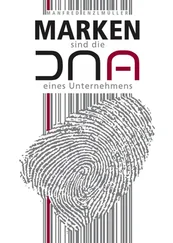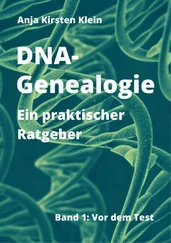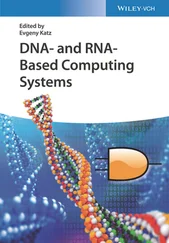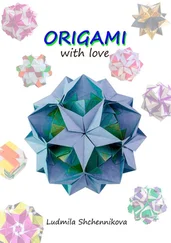DNA Origami
Здесь есть возможность читать онлайн «DNA Origami» — ознакомительный отрывок электронной книги совершенно бесплатно, а после прочтения отрывка купить полную версию. В некоторых случаях можно слушать аудио, скачать через торрент в формате fb2 и присутствует краткое содержание. Жанр: unrecognised, на английском языке. Описание произведения, (предисловие) а так же отзывы посетителей доступны на портале библиотеки ЛибКат.
- Название:DNA Origami
- Автор:
- Жанр:
- Год:неизвестен
- ISBN:нет данных
- Рейтинг книги:5 / 5. Голосов: 1
-
Избранное:Добавить в избранное
- Отзывы:
-
Ваша оценка:
- 100
- 1
- 2
- 3
- 4
- 5
DNA Origami: краткое содержание, описание и аннотация
Предлагаем к чтению аннотацию, описание, краткое содержание или предисловие (зависит от того, что написал сам автор книги «DNA Origami»). Если вы не нашли необходимую информацию о книге — напишите в комментариях, мы постараемся отыскать её.
Discover the impact and multidisciplinary applications of this subfield of DNA nanotechnology DNA Origami
DNA Origami
DNA Origami
DNA Origami — читать онлайн ознакомительный отрывок
Ниже представлен текст книги, разбитый по страницам. Система сохранения места последней прочитанной страницы, позволяет с удобством читать онлайн бесплатно книгу «DNA Origami», без необходимости каждый раз заново искать на чём Вы остановились. Поставьте закладку, и сможете в любой момент перейти на страницу, на которой закончили чтение.
Интервал:
Закладка:
Hanbin MaoDepartment of Chemistry and Biochemistry Kent State University, Kent, OH, USA
Takashi MoriiInstitute of Advanced Energy, Kyoto University, Uji, Kyoto, Japan
Eiji NakataInstitute of Advanced Energy, Kyoto University, Uji, Kyoto, Japan
Michael P. O’HaganInstitute of Chemistry, Center for Nanoscience and Nanotechnology The Hebrew University of Jerusalem Jerusalem, Israel
Wolfgang PfeiferDepartment of Mechanical and Aerospace Engineering, The Ohio State University Columbus, OH, USA Department of Physics, The Ohio State University, Columbus, OH, USA
Petteri PiskunenBiohybrid Materials, Department of Bioproducts and Biosystems, Aalto University, Finland
Praneetha Sundar PrakashDepartment of Physics, Kent State University Kent, OH, USA
Barbara SaccàCenter for Medical Biotechnology, University of Duisburg‐Essen, Universitätsstr. Essen, Germany
Thorsten‐Lars SchmidtDepartment of Physics, Kent State University Kent, OH, USA
Melika ShahhosseiniDepartment of Mechanical and Aerospace Engineering, The Ohio State University Columbus, OH, USA
Soumya ChandrasekharDepartment of Physics, Kent State University Kent, OH, USA
Yuki SuzukiFrontier Research Institute for Interdisciplinary Sciences, Tohoku University Sendai, Japan
Hisashi TadakumaSchool of Life Science and Technology & Gene Editing Center, ShanghaiTech University Shanghai, China
Jianbang WangInstitute of Chemistry, Center for Nanoscience and Nanotechnology The Hebrew University of Jerusalem Jerusalem, Israel
Itamar WillnerInstitute of Chemistry, Center for Nanoscience and Nanotechnology The Hebrew University of Jerusalem Jerusalem, Israel
Verena WulfDepartment of Biomedical Engineering Faculty of Engineering, Tel‐Aviv University Tel Aviv, Israel
Xiwen XingDepartment of Biotechnology, Key Laboratory of Virology of Guangzhou, College of Life Science and Technology, Jinan University Guangzhou, China
Shiwei ZhangInstitute of Advanced Energy, Kyoto University, Uji, Kyoto, Japan
Huyen DinhInstitute of Advanced Energy, Kyoto University, Uji, Kyoto, Japan
Peng LinInstitute of Advanced Energy, Kyoto University, Uji, Kyoto, Japan
Preface
Thanks to the contributions of great pioneers and many researchers, DNA nanotechnology has become one of the major fields in science and technology. Since the introduction of DNA origami created by Dr. Rothemund of California Institute of Technology in 2006, it has become a fascinating field for the researchers around the world. DNA origami has grown significantly in these 15 years. This DNA origami field has contributed to numerus scientific discoveries and creation of innovative technologies. Many researchers now recognize that DNA origami has boundless possibilities. This field has become a multidisciplinary research area, where the researchers join in together from various research fields including computer science, materials science, chemistry, physics, biology, and medicine. The research field is open for new researchers who want to realize their ideas, which makes this field more innovative. So, it is not too much to say that the DNA origami technology has completely changed the concept of nanotechnology and research styles.
This book entitled DNA Origami: Structures, Technology, and Applications , highlights breakthroughs of DNA origami researches with comprehensive view from the past to the latest researches. The first section gives a general introduction of DNA origami followed by reviews on strategy for DNA origami design and its applications. The second section gives researches on applications for DNA origami‐based physics and biophysics. The third section gives the applications for DNA origami‐based chemistry and biochemistry. The fourth section gives the details about biological and medical applications. The topics presented in this book will make reader comprehensively understand how DNA origami technology has emerged and been expanded to multidisciplinary researches. The readers will also learn about the potential of researches and future directions.
Finally, I would like to express my heartfelt gratitude to all the contributors for their tremendous efforts and works to complete this book. I also sincerely thank for all the staffs of John Wiley & Sons for production of this fantastic book.
I greatly hope that the reader will enjoy this book and learn the fascinating aspects of DNA origami technology and find the possibility of this research area for future innovations.This book is sincerely dedicated to the late Professor Nedrian C. Seaman, the great founder of DNA nanotechnology.
Masayuki Endo
Autumn 2021, Kyoto
1 DNA Origami Technology: Achievements in the Initial 10 Years
Masayuki Endo1,2
1 Institute for Integrated Cell-Material Science, Kyoto University, Kyoto, Japan
2 Organization for Research and Development of Innovative Science and Technology, Kansai University, Osaka, Japan
1.1 Introduction
DNA nanotechnology has grown as a field of research in the past three decades. The technology uses the self‐assembly of DNA molecules that have sequence selectivity, programmability, and periodical double‐helical structure. Self‐assembly is commonly seen in living systems and plays a central role in the formation of cellular structures and thus influences the functions of organized biological systems in the cell. From the viewpoint of molecular science, the precise formation of structures via self‐assembly attracts attention because specific functions can stem from the precise arrangement of the molecules. DNA nanotechnology allows the construction of various self‐assembled scaffolds that are versatile for the placement and arrangement of functional molecules and nanomaterials and for the production of complex molecular devices.
The field of DNA nanotechnology was pioneered by Ned Seeman, who first proposed the concept of DNA nanotechnology in 1982, and then created various DNA motifs and strategies for self‐assembly that constitute the basic concept of structural DNA nanotechnology ( Figure 1.1) [1, 2]. DNA nanotechnology now is now applied in the construction of nanoscale structures and functionalized materials and is further used in molecular computation and mechanics and in the fields of chemistry and synthetic biology, and continues to progress in response to technology demands [3–5]. DNA origami, a new form of programmed DNA assembly based on well‐established DNA nanotechnology, enables the design of two‐dimensional (2D) nanostructures with a wide variety of shapes in a defined size [6]. Moreover, functional molecules, enzymes, and nanomaterials have been precisely placed on DNA origami structures, which enables the creation of novel molecular systems, nanoscale devices, and advanced materials [3–5].
This chapter describes the general introduction of DNA origami and highlights the basics of DNA origami technology, including the design and construction of 2D and three‐dimensional (3D) structures and selective functionalization. In addition, this chapter focuses on its applications in various research fields, including single‐molecule detection and sensing, single‐molecule imaging of biomolecules, molecular machines, plasmonics, dynamic devices, and molecular delivery systems.

Интервал:
Закладка:
Похожие книги на «DNA Origami»
Представляем Вашему вниманию похожие книги на «DNA Origami» списком для выбора. Мы отобрали схожую по названию и смыслу литературу в надежде предоставить читателям больше вариантов отыскать новые, интересные, ещё непрочитанные произведения.
Обсуждение, отзывы о книге «DNA Origami» и просто собственные мнения читателей. Оставьте ваши комментарии, напишите, что Вы думаете о произведении, его смысле или главных героях. Укажите что конкретно понравилось, а что нет, и почему Вы так считаете.












